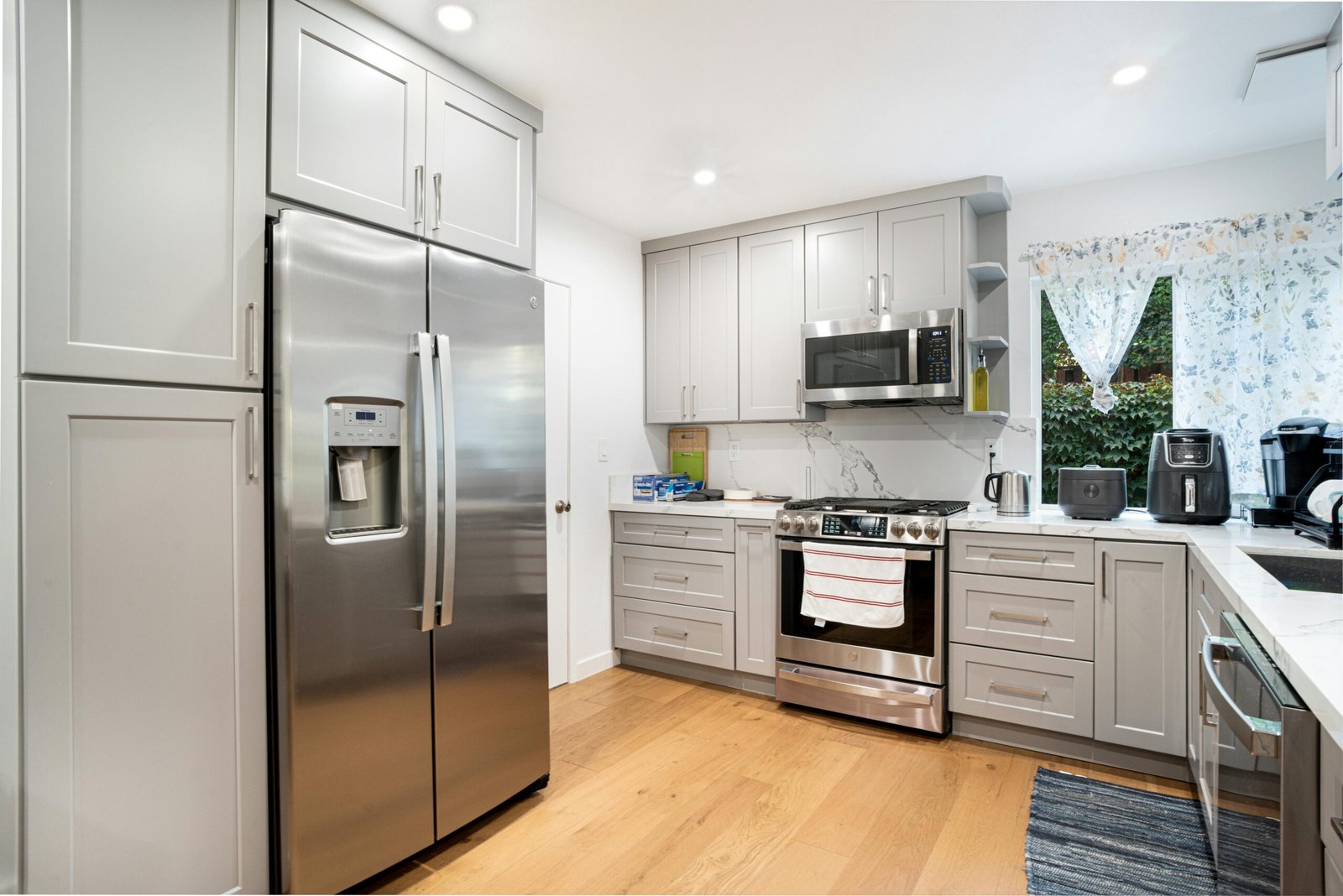Trying to decide between an air fryer and a convection oven? Both promise quicker cooking and better flavor, but they work differently and suit different needs. This guide breaks down how they compare in performance, speed, energy use, and practicality—plus a few top-rated product picks to help you shop with confidence.
How Each Appliance Works
Air Fryers
Air fryers use a compact chamber and a powerful fan to circulate hot air rapidly. They cook food quickly at high heat and create a crispy, golden exterior similar to deep-frying—with little to no oil. Because they’re smaller, they preheat fast and don’t heat up your whole kitchen.
Convection Ovens
Convection ovens use a fan to circulate hot air throughout a larger oven cavity. They cook more evenly at a slower pace and maintain more moisture inside foods, making them juicier and tender. They also hold more food at once, making them ideal for families or batch cooking.
Example:
Cooking chicken wings in an air fryer gets them crispy in about 15 minutes. A convection oven may take closer to 25 minutes, but the meat stays juicier.
Top Recommended Air Fryers
If you’re leaning toward an air fryer, here are some standout options worth considering:
- Instant Vortex Plus 6-Quart Air Fryer – Great for families of 2–4, this model offers consistent results, simple controls, and a roomy basket for larger portions.
- Cosori TurboBlaze 6-Quart Air Fryer – Offers a mix of preset cooking modes and solid capacity, making it a great value for everyday use.
- Ninja 4-Quart Air Fryer (AF101) – Compact and powerful, this is ideal for singles or couples who want quick, crispy results without using much counter space.
Each of these models is known for producing crispy, evenly browned results while being easy to clean thanks to nonstick baskets.
Top Recommended Convection Oven Combos
If you prefer the versatility and capacity of a convection oven, these models are popular picks:
- Cosori Smart 12-in-1 Air Fryer Toaster Oven Combo – Works as an oven, air fryer, dehydrator, and more. Perfect if you want one appliance to handle everything from baking to roasting.
- Cuisinart Air Fryer Toaster Oven with Grill – Offers generous capacity and eight cooking functions, including grill, broil, and bake. It’s a great choice for larger meals.
- Hamilton Beach Air Fryer Toaster Oven Combo – Budget-friendly but still roomy, this model fits up to a 12-inch pizza and offers multiple cooking modes.
These convection oven combos are excellent if you often cook for groups or want one appliance that can replace several others.
Cooking Performance Compared
Air fryers are best for quick browning and crisping, while convection ovens excel at retaining moisture and even cooking.
- Potatoes: Air fryers give a crunchy crust with a fluffy inside. Convection ovens make them soft and moist throughout.
- Broccoli: Air fryers brown it fast but can dry it slightly. Convection ovens keep it tender and evenly cooked.
- Steak: Air fryers produce a strong crust but risk dryness. Convection ovens cook it more evenly and keep it juicy.
Speed, Temperature, and Energy Use
- Cooking Speed: Air fryers are about 20–30% faster than convection ovens.
- Temperature: Air fryers run about 25°F hotter. When converting recipes, reduce the temperature or time.
- Energy Use: Air fryers use about 1500 watts, while convection ovens can use 2500–5000 watts.
Example: A chicken breast takes 15–18 minutes in an air fryer compared to 25 minutes in a convection oven.
Practical Kitchen Considerations
Choose an Air Fryer if You:
- Cook for one or two people
- Want fast meals and snacks
- Love crispy foods like fries, wings, and breaded vegetables
- Have limited counter space
Choose a Convection Oven if You:
- Cook for families or groups
- Bake often (cookies, cakes, bread)
- Roast meats and sheet-pan meals
- Want consistent, moist results
Capacity Guide: Air fryers hold about 2–5 quarts (2–4 servings). Convection ovens hold 4–5 cubic feet and can handle multiple dishes at once.
Cleaning and Maintenance
- Air fryers need frequent cleaning, but baskets are often dishwasher-safe.
- Convection ovens need less frequent but deeper cleaning due to their larger size.
Wiping down after every use helps keep both appliances working well long-term.
Cost Considerations
- Air fryers: $70–$200, ideal for smaller households
- Convection ovens: $200–$800, better for families or frequent large-batch cooking
Quick Decision Checklist
Ask yourself:
- How many people do I usually cook for?
- Do I want crispy or juicy results?
- How much counter space do I have?
- Do I value speed or large capacity more?
Final Takeaway
Both air fryers and convection ovens can upgrade your cooking—but they shine in different ways. Air fryers are perfect for quick, crispy meals in smaller portions. Convection ovens are better for larger batches, baking, and juicy roasts. Choosing the one that fits your cooking style will help you get the best results and enjoy your time in the kitchen more.
FAQs
Which is better: an air fryer or convection oven?
Air fryers are best for small, quick meals. Convection ovens are better for larger meals and more even cooking.
How do cooking times compare?
Air fryers cook about 20–30% faster.
How do I adjust recipes between them?
Lower the temperature by 25°F or cut the time by 20% when converting convection recipes to an air fryer.
Which uses less energy?
Air fryers use less energy due to their smaller size and faster cooking.
What cooks best in each?
Air fryers: fries, wings, vegetables.
Convection ovens: baked goods, roasts, casseroles.
How do they compare on cleaning?
Air fryers need more frequent but quicker cleaning. Convection ovens need less frequent but deeper cleaning.
Which is more budget-friendly?
Air fryers cost less and are better for smaller households. Convection ovens are pricier but handle more food at once.
How big is the cooking space?
Air fryers hold 2–5 quarts (2–4 servings). Convection ovens hold 4–5 cubic feet (multiple dishes).







